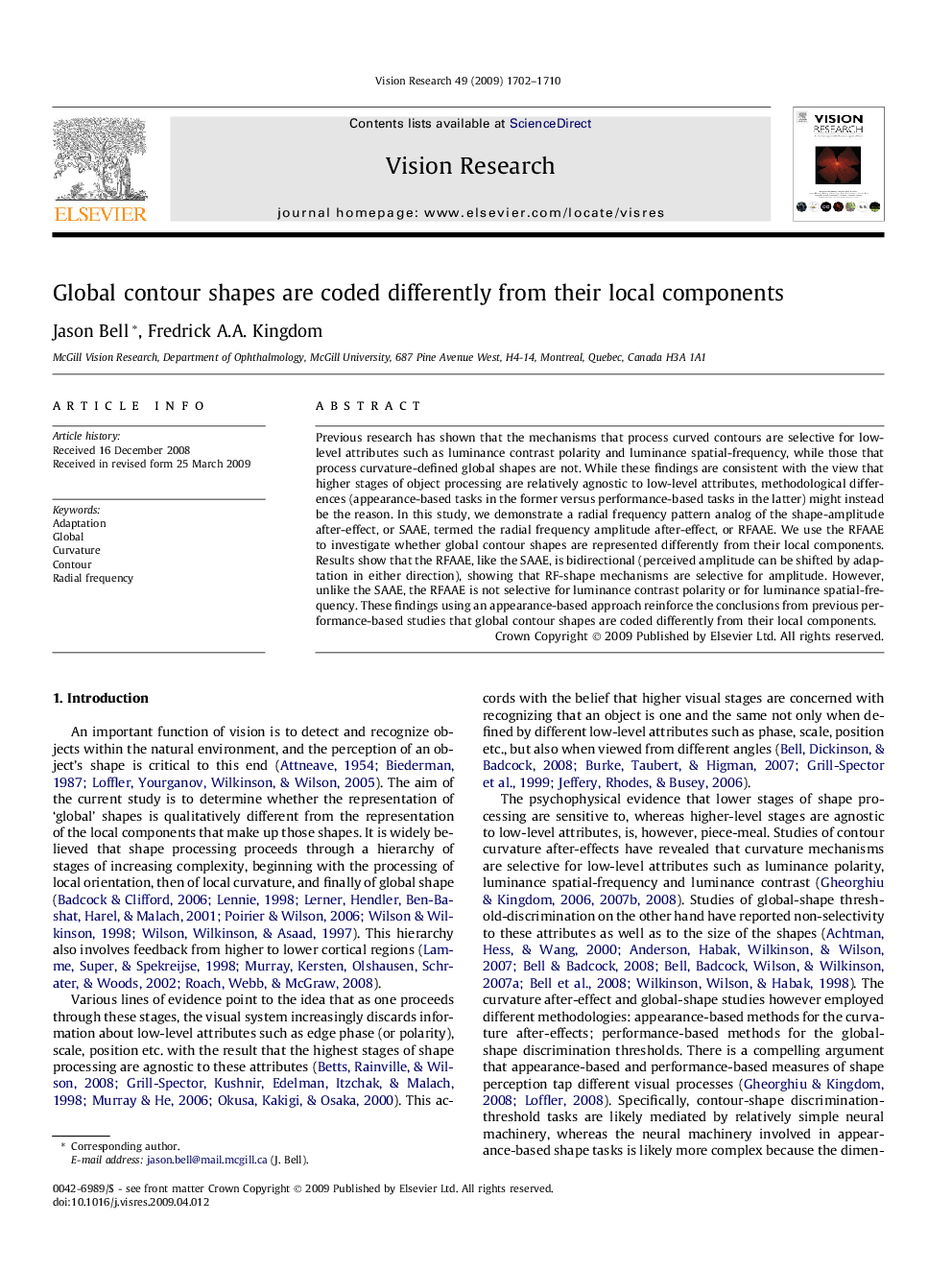| Article ID | Journal | Published Year | Pages | File Type |
|---|---|---|---|---|
| 4034723 | Vision Research | 2009 | 9 Pages |
Previous research has shown that the mechanisms that process curved contours are selective for low-level attributes such as luminance contrast polarity and luminance spatial-frequency, while those that process curvature-defined global shapes are not. While these findings are consistent with the view that higher stages of object processing are relatively agnostic to low-level attributes, methodological differences (appearance-based tasks in the former versus performance-based tasks in the latter) might instead be the reason. In this study, we demonstrate a radial frequency pattern analog of the shape-amplitude after-effect, or SAAE, termed the radial frequency amplitude after-effect, or RFAAE. We use the RFAAE to investigate whether global contour shapes are represented differently from their local components. Results show that the RFAAE, like the SAAE, is bidirectional (perceived amplitude can be shifted by adaptation in either direction), showing that RF-shape mechanisms are selective for amplitude. However, unlike the SAAE, the RFAAE is not selective for luminance contrast polarity or for luminance spatial-frequency. These findings using an appearance-based approach reinforce the conclusions from previous performance-based studies that global contour shapes are coded differently from their local components.
